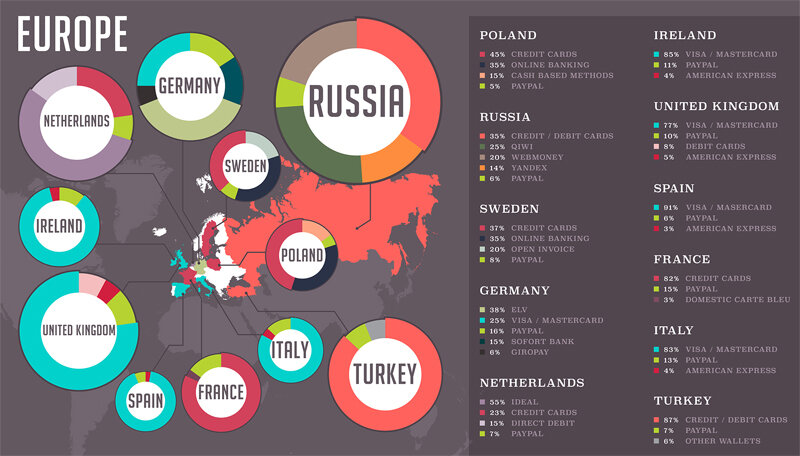E-learning: 6 rules to respect in the payment process
Not only tourism, retail and food were impacted by the COVID-19 pandemic. The education sector has been disrupted as well and that resulted in the closure of schools around the world. Globally, more than 1.2 billion children have deserted classes. As a result, the education sector was not immune to change, and e-learning has grown dramatically to be part of the Covid-19 trends.
According to Statista, in 2021, the search term "free online learning" experienced the strongest growth (367.53%) on Google in the UK from January to April 2020 compared to 2019 followed by "teaching online" which grew by 328.19%. The keyword "Online learning courses" grew by 240.34%.
A success factor for online learning service providers is the choice of the ideal payment solution and the integration of the right payment methods. We'll give you the most important tips you should consider when offering your e-learning services.
1- A trustworthy website to encourage payments
The payment form is one of the most important parts of the customer journey, abandoning the cart at this stage means a lost transaction. This applies to any business or professional selling goods or services, and online education service providers are no exception.
Payment pages should attract attention without complicating the payment process. You can make payment pages the way you need them, but they also must be tailored to the user's needs and encourage a successful user experience. Find out the 6 mistakes to avoid for a better conversion rate on your e-commerce.
Also, the most important thing to know is how your students usually make their payments. This brings us to the next step.
2- The payment provider must offer all relevant payment methods to your target:
https://ecommercenews.eu/online-payment-methods-in-europe/
Your payment solution provider should be able to offer the most common payment methods used by your target market. An international payment solution that offers globally used credit cards and electronic wallets is essential. The most common credit cards are Visa, MasterCard, American Express and UnionPay. PayByLink can also be a way that will allow you to improve your conversion rate given its simplicity if you have occasional students.
In addition, since e-learning is very popular among younger generations, it is also worth it to include e-wallets depending on the target market (Google Pay, PayPal, Alipay, WeChat Pay...).
For recurrent payments, direct debit is recommended in some countries, especially in the Euro payment area (SEPA).
The location of your students should also be taken into consideration. Offering options that are geographically adapted to your target is a must when teaching students abroad. Chinese consumers may wish to use Alipay for example, while those in Germany may wish to make their payments through the Euro area-specific instant transfer.
3- Automation of the payment process
When you offer online courses, the flow of payments has a direct impact on customer satisfaction. Your students can save their credit card data and pay with just one click. There is no need to re-fill the payment form. Recurring payments allow you to automatically charge your students on certain dates. This helps them stay focused on learning.
If your online education platform has a subscription fee, your students should be able to automatically add funds to their account, using defined criteria and a previously selected payment card. This improves the user experience and helps you maintain and grow your audience.
4- Focus on security
Customer payment details are sensitive data that all businesses must protect, as outlined in the Data Protection Act (GDPR). When selecting payment processing software, you need to pay close attention to the security it guarantees and its reliability in order to protect your customers' payments and personal data. The basic prerequisite is PCI certification. This ensures that the payment provider complies with applicable payment regulations and standards and that data such as credit card numbers or customer addresses are protected.
5- Automation of the payment process
Does the payment solution offer 24/7 customer service or email support? Is there an FAQ you can visit if you have a question that needs to be addressed? There may be cases where you need to contact your payment provider as soon as possible, for example, if there is a problem with a customer being overcharged or duplicate payment, and you need to know if your payment solution provider is there to help you.
6- Consider the simplicity of integration of the payment solution
Finally, you'll need to think about how easy it is to integrate the payment solution into your website. If you already have cart features or a CMS that you use, then you also need to make sure that it can integrate these payment solutions.
Often, the best choice is a payment gateway that redirects your customers to the payment provider's website when it's time to enter their payment information and then redirect them to your Website when the transaction is complete.
This is by no means an exhaustive list of everything Silkpay can do for your online education platform. We have years of experience and a wide range of payment methods. We can offer an individual approach and special attention to your payment processes. We can help you create an online learning platform that lets your students focus on education.


